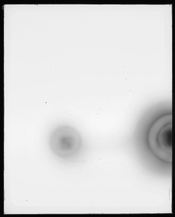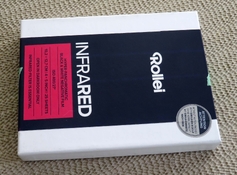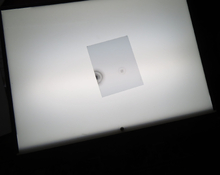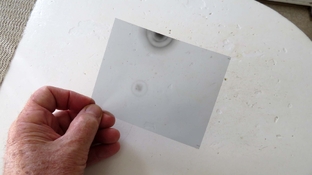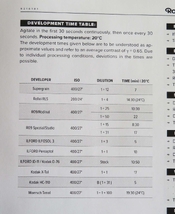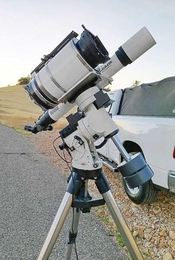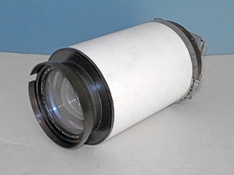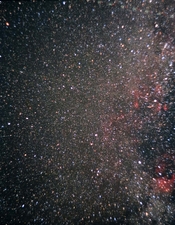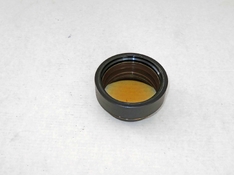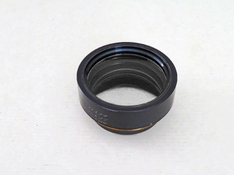Matt Hall
Member
I exposed some of this Rollei 4x5 B&W Infrared 400 film through my astrograph camera. I shot the Orion Nebula and surrounding H-alpha regions. It was a tracked exposure, 30 minutes @ f/2.5 and I used a Wratten #25 red filter to record approx 600nm and above on the film. I had my lab process in D-76 at 22C for 12.5 min. - a 2 to 2 1/2 stop push process (equivalent ASA 400-600). Surprisingly the negatives came back extremely thin. I can see the main stars in Orion, and obviously Sirius, but no nebulosity anywhere.
HOWEVER, I do see two very strange blobs (see attached image). First off, my film holders are IR certified. You will notice that the stars are pinpoints in the image, so these artifacts are not just out of focus point sources--my camera was properly focused. I took the film to the lab in a factory triple box with the film wrapped in an aluminum pouch inside (just like it comes from the factory). I also made sure the lab turned off ALL their safe lights (including any IR lights) before opening my film box for processing. After reviewing the results with the owner of the lab we concluded the following:
1. There are NO notches on the film (there is actually a sticker on the front of the box that states there are no notches and that the film is loaded emulsion side UP). The warning sticker is in both English and German indicating this was done at the point of manufacture in Europe, Belgium to be exact. To us the no notches means that this film was likely cut from larger stock. That opens up a whole other can of worms (what was the condition of the original stock?).
2. If you look closely you can see what appears to be the number '5' in the smaller artifact. There is nothing in my film box or film holder that would have imprinted this figure.
3. We both feel that this film was exposed to some light source (be it visual or IR does not matter) prior to being cut into 4x5 sheets.
I have more film I exposed on that same night to still be processed, I just sent in this one as a development test. I cannot turn those into the lab as tomorrow is the Thanksgiving holiday and the lab is closed on Friday. So Monday it is. If anyone has any thoughts or experiences with this I would appreciate hearing from you. I spent almost $100 on this box of film and am concerned that it is complete junk.
HOWEVER, I do see two very strange blobs (see attached image). First off, my film holders are IR certified. You will notice that the stars are pinpoints in the image, so these artifacts are not just out of focus point sources--my camera was properly focused. I took the film to the lab in a factory triple box with the film wrapped in an aluminum pouch inside (just like it comes from the factory). I also made sure the lab turned off ALL their safe lights (including any IR lights) before opening my film box for processing. After reviewing the results with the owner of the lab we concluded the following:
1. There are NO notches on the film (there is actually a sticker on the front of the box that states there are no notches and that the film is loaded emulsion side UP). The warning sticker is in both English and German indicating this was done at the point of manufacture in Europe, Belgium to be exact. To us the no notches means that this film was likely cut from larger stock. That opens up a whole other can of worms (what was the condition of the original stock?).
2. If you look closely you can see what appears to be the number '5' in the smaller artifact. There is nothing in my film box or film holder that would have imprinted this figure.
3. We both feel that this film was exposed to some light source (be it visual or IR does not matter) prior to being cut into 4x5 sheets.
I have more film I exposed on that same night to still be processed, I just sent in this one as a development test. I cannot turn those into the lab as tomorrow is the Thanksgiving holiday and the lab is closed on Friday. So Monday it is. If anyone has any thoughts or experiences with this I would appreciate hearing from you. I spent almost $100 on this box of film and am concerned that it is complete junk.


